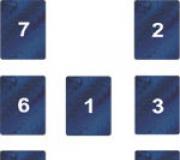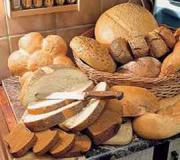Indian ornaments for painting. Colorful Indian patterns and ornaments
Indian traditional ornament is a riot of color and variety of shapesThe craving for everything beautiful has been inherent in every person since the creation of the world. Over the centuries, this has been reflected in the desire to surround oneself with beautiful and exquisite things, especially self made. Folk patterns is an integral branch of folk art. It is ethnic drawings that are fully capable of reflecting original traditions, spirit and character of the people. Indian ornaments occupy a special place in the world's treasure chest of priceless folk art.
Features and flavor
India is a country of contrasts, a riot of colors and extraordinary architecture. But to plunge into the magical atmosphere eastern country, it is not necessary to gather in long journey. It is the Indian ornament that reflects the original splendor with which you can decorate, without exaggeration, your life.
Where can you see Indian designs? This could be painted dishes, fabrics, stylish clothes. Most often, such original patterns are used in traditional Indian.
Indian ethnic patterns have their own characteristics:
- bright, like everything in India;
- all motives are necessarily endowed with a special meaning;
- consist of many individual elements, filigree woven together.
 Like any national ornament, the Indian one carries a sacred meaning.
Like any national ornament, the Indian one carries a sacred meaning.
Indian ornament is a harmony of colors, aesthetics, traditions and religion. When choosing certain patterns, it is important to know about the secrets they keep! The following types are world famous: “cucumber”, vegetable and geometric patterns.
 In addition to the meaningfulness of each element, Indian ornament is also notable for its beauty.
In addition to the meaningfulness of each element, Indian ornament is also notable for its beauty.
Paisley or paisley
The most famous Indian design is paisley (or paisley). The indigenous people of India call it “buta”. This drawing is the oldest of those currently known, and is considered to be its birthplace. Ancient state Sassanids.
 Paisley or buta
Paisley or buta  Paisley can be the main element of the ornament
Paisley can be the main element of the ornament
Today its true symbolism is certainly unknown, there are only assumptions. According to one version, such patterns depict flames that personify human life. Such an original drawing symbolizes development, dynamism and energy. That's why today wedding dresses Indian newlyweds necessarily contain such motives.

Paisley is incredibly popular not only in India, but also in other countries of the fabulous East. Europeans also liked the sophisticated aesthetics and originality of this original drawing. Therefore, today not only designers fashionable clothes often used Indian motifs in their collections.
The original pattern in the shape of a cucumber is popular in painting dishes or decorating interiors in oriental style.
Floral patterns
It so happened historically that India is not only a magical and exotic country, but also a multi-confessional one, that is, with different religions. This could not but affect folk art. Floral patterns are especially popular in that part of the country where the main religion for the residents is Islam.
 Floral patterns often decorate sari
Floral patterns often decorate sari
This is due to the fact that Muslims are prohibited from depicting the face of Allah, people or animals. Therefore, in these regions, artists, creating plant patterns, honed their skills for centuries. Most Popular floral motif is an image of a lotus, a flower revered and sacred to the people of India. It symbolizes creativity, wisdom and harmony. Indians sincerely believe that he has magical power fulfill your cherished desires.
 Lotus image in Indian ornament
Lotus image in Indian ornament
In addition to the lotus, the patterns are complemented by images of mango and pomegranate fruits, carnation flowers, palm trees and cypress. Floral Indian ornament in ancient times was the only form of decoration for many, today it is applied arts used everywhere.
 The combination of various elements allows you to create beautiful and complex patterns
The combination of various elements allows you to create beautiful and complex patterns
Indian geometry
Along with paisley and images of flowers and plants, geometric patterns are popular in India. Each element woven into the Indian ornament is symbolic and has its own meaning:
- Lines and angles. If they are connected in a triangle that looks up - this is the personification of fire, masculinity and strength, if down - a female symbol of grace and water.
- Star. Such patterns symbolize divinity and hope.
- Square. It can mean stability, home and honesty.
- Octagon. A popular element that represents reliability and protection.
- Cross. A popular symbol of many patterns, this Indian ornament symbolizes the source of strength and energy, the karmic connection between heaven and earth.
- Circles. There are many variations of the image of circles in India. They signify integrity and life development. If a circle is depicted with tongues of flame, then the Indian ornament says: “that which develops tirelessly produces and generates!”
When composing your geometric patterns in the Indian style, you can use several elements, weaving them into a single pattern, which is endowed with powerful amulet properties.
Indian ornament
The designs of exotic India are invariably whimsical, original and symbolic. It is impossible to describe Indian ornament in two words. This is not only incredible aesthetics, but also a reflection of history, perception of the world, traditions and beliefs of an original people.
Publication 2016-02-01 Liked 3 Views 1708
What to combine with Indian ornaments
The culture of each ethnic group has evolved over centuries; this mosaic consists of music, songs, literature, national clothes and many more elements. Traditional ornament is an integral part of culture, unique identification mark. It can be found on dishes, objects, clothes and even on the body, as is the case with Indian.

Rich Indian patterns on fabric
If you turn your attention to the patterns decorating Indian textiles, then here too these people do not betray themselves: a riot of colors, abundance small elements, excess achieved harmony. Popular Topics for ornaments it is the world of nature and animals. lavishly decorated with flowers, mangoes, images of lotus, elephants, peacocks, tigers and fish.

Moreover, each region has different patterns, for example, in Rajasthan the pattern of small dots is very popular, and in the state of Uttar Pradesh the main motif is the tree of life.

There are even special ones. Bandhana is an ancient prototype modern pattern tie-dye, when the image is created using knots on the fabric, tied while painting. The most common technique of applying a design to fabric is with the help of special wooden seals, and in especially exclusive cases - by hand with a brush. If geometric patterns or plant patterns, figures of people, animals are immediately woven from yarn - this is called itkat.

Famous oriental paisley pattern
Paisley can be called one of the most famous patterns from the East. You may know it under the name “Indian cucumber”, buta, Turkish bean. This almond-shaped element can be found in traditional designs of Persia, Iran and India.
Its origin is not fully known and there are several different versions on this matter, but the meaning is similar in all cultures - this is fertility and the beginning of a new life... In India, inside a frame of images of Indian cucumbers they wrote their wishes, since it was believed that the pattern would help what was written come true .

In Europe, the paisley pattern became popular in the 18th century, and fashion has often returned to it since then. This ornament experienced its last bright boom during its heyday, and, apparently, now its time is coming again, because it appears in the collection of one designer or another.

How to combine Indian patterns in clothes
If you choose a scarf, belt or other small accessory with an oriental pattern, then you can safely combine it with clothes rich colors, because India loves bright colors! It is better to choose plain accessories for a dress with a similar color. A paisley blouse will look great with black jeans or trousers. Fans
Publication 2016-02-01 Liked 3 Views 1708
What to combine with Indian ornaments
The culture of each ethnic group has evolved over centuries; this mosaic consists of music, songs, literature, national clothing and many more elements. Traditional ornament is an integral part of culture, a kind of identification mark. It can be found on dishes, objects, clothes and even on the body, as is the case with Indian.

Rich Indian patterns on fabric
If you turn your attention to the patterns that decorate Indian textiles, then here too these people do not betray themselves: a riot of colors, an abundance of small elements, excess that has achieved harmony. Popular themes for ornaments are the natural world and animals. lavishly decorated with flowers, mangoes, images of lotus, elephants, peacocks, tigers and fish.

Moreover, each region has different patterns, for example, in Rajasthan the pattern of small dots is very popular, and in the state of Uttar Pradesh the main motif is the tree of life.

There are even special ones. Bandhana is an ancient prototype of the modern tie-dye pattern, when the image is created using knots on the fabric, tied while dyeing. The most common technique of applying a design to fabric is with the help of special wooden seals, and in especially exclusive cases - by hand with a brush. If geometric patterns or plant patterns, figures of people and animals are immediately woven from yarn, this is called itkat.

Famous oriental paisley pattern
Paisley can be called one of the most famous patterns from the East. You may know it under the name “Indian cucumber”, buta, Turkish bean. This almond-shaped element can be found in traditional designs of Persia, Iran and India.
Its origin is not fully known and there are several different versions on this matter, but the meaning is similar in all cultures - this is fertility and the beginning of a new life... In India, inside a frame of images of Indian cucumbers they wrote their wishes, since it was believed that the pattern would help what was written come true .

In Europe, the paisley pattern became popular in the 18th century, and fashion has often returned to it since then. This ornament experienced its last bright boom during its heyday, and, apparently, now its time is coming again, because it appears in the collection of one designer or another.

How to combine Indian patterns in clothes
If you choose a scarf, belt or other small accessory with an oriental pattern, you can safely combine it with clothes in rich colors, because India loves bright colors! It is better to choose plain accessories for a dress with a similar color. A paisley blouse will look great with black jeans or trousers. Fans
Today in the craze in India, many artists are discovering this folk art like a traditional Indian ornament. As in any folk art, Indian ornament is also extraordinarily beautiful and intricate, and each element is not just an image, but a means of transmitting information, in other words, each element means something, like in any nation.
I generally love folk art, the ornaments of all nations are beautiful in my opinion, each has its own unique beauty, for each ornament you can find a place in your life. Ornaments can decorate the interior, interior details, clothing, dishes, furniture.
But today’s popular henna painting, for example, will not be done in the style of North American Indians; in such a case, every artist will first of all remember the traditional Indian ornament. And in order not to accidentally wish the bearer of the drawing something inappropriate, it would be good to find out before starting work what this or that element means :)
The first element is probably familiar to all of us since childhood; remember this element could often be found on mother’s dressing gowns, scarves, sweaters, etc. It is still just as popular today; it must be said that this element became popular and widespread many centuries ago.
It's called: Butane (buta), paisley, Indian cucumbers (peppers).

It is still unknown what exactly it is, perhaps it is the seed of a date palm, cypress, or even sacred in oriental culture flame. But the main thing is what Bhutan means, it is a symbol of fertility, it is believed that things with this symbol attract wealth and prosperity to the owner. It is also generally accepted that this symbol denotes the entire beautiful divine essence of the person himself, his talents and all best qualities given to him by the gods.
Flowers


Flowers are also a very popular element of patterns; they can be found almost everywhere; Indians generally have a special love for flowers. Flowers also mean the transience of life, the value of every moment. It is important to understand what kind of flower is drawn, for example, red Ashoka flowers symbolize love.
Lotus

The lotus has a very important meaning; the lotus is a symbol of purity, fidelity, enlightenment, inspiration to overcome any difficulties in life. The lotus is more than a plant, it is a symbol of unshakable will and determination. The lotus is born in order to go through the darkness, to survive even in the most dirty water and show the world your pure, flawless beauty. Also, the lotus ornament has a slight erotic connotation; for example, newlyweds are usually decorated with garlands of lotuses. And women give men objects with images of an eight-leaf lotus, wanting to hint about their feelings.
Elephant

What traditional Indian drawing can do without an elephant, the elephant is one of the most favorite animals in artistic arts India. This is no coincidence, because the elephant is a symbol of longevity, prosperity, prudence, will, patience, goodwill and insight. In general, if you wish a person all the best, everything he needs to succeed in life or fulfill his deepest desires, give him an “elephant”, or an image of one.

It is not for nothing that the Hindu god Ganesha is a symbol of wisdom and happiness. It is easy to recognize him, because this god has the head of an elephant.
Cow

The cow is the mother of the whole world, Hindus greatly respect and honor the cow, the image of a cow on objects symbolizes all that is good, unselfishness and self-sacrifice.
Peacock

Peacock can also often be found in Indian patterns. Peacock national symbol India, this royal bird symbolizes wealth, abundance, and can also drive out dark forces.
Sun

The sun will mean divine protection, since the sun is the divine eye looking at us from heaven. Most often, the sun in Indian ornaments is depicted in the form of a circle with many rays.




